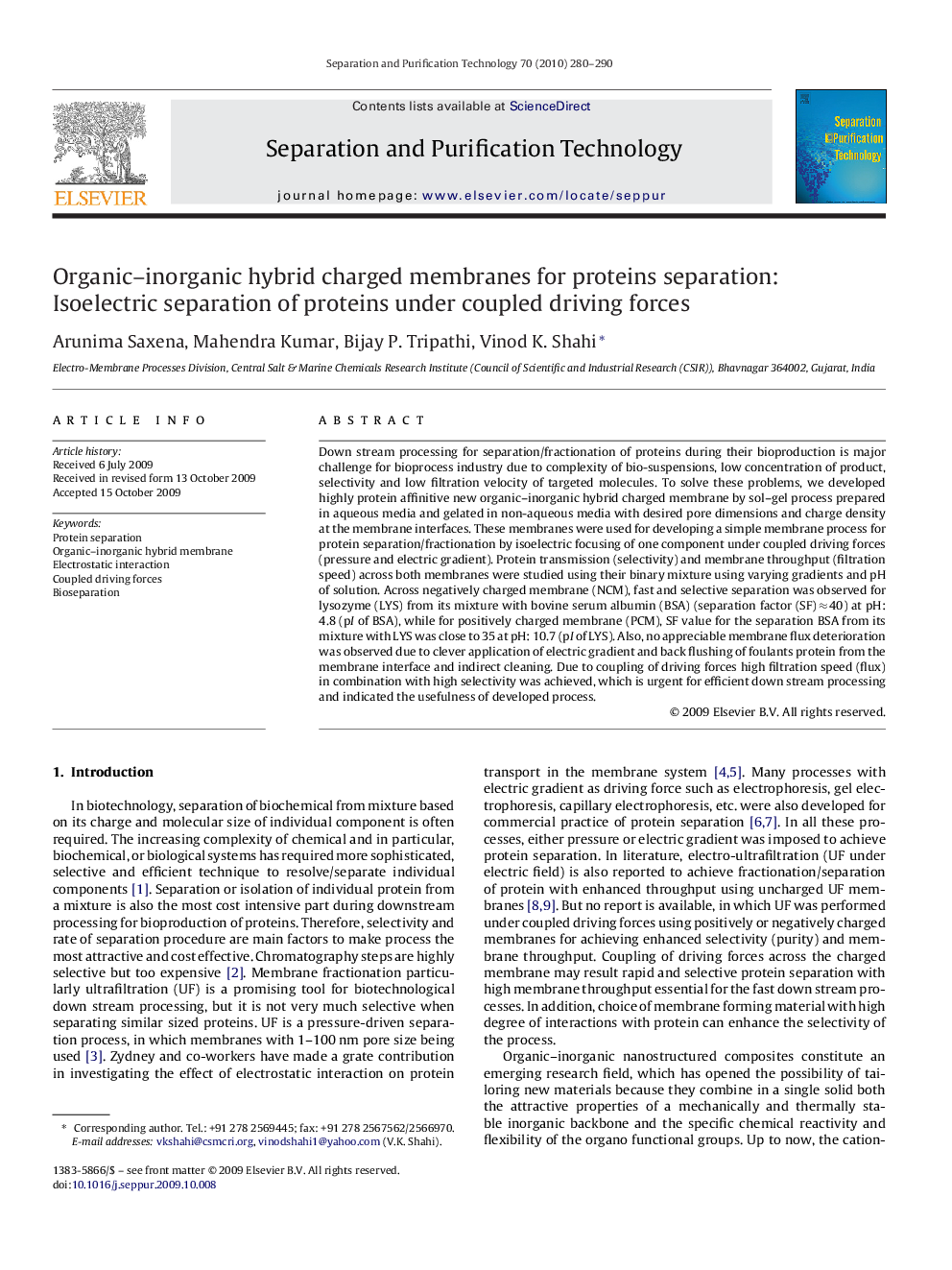| Article ID | Journal | Published Year | Pages | File Type |
|---|---|---|---|---|
| 643108 | Separation and Purification Technology | 2010 | 11 Pages |
Down stream processing for separation/fractionation of proteins during their bioproduction is major challenge for bioprocess industry due to complexity of bio-suspensions, low concentration of product, selectivity and low filtration velocity of targeted molecules. To solve these problems, we developed highly protein affinitive new organic–inorganic hybrid charged membrane by sol–gel process prepared in aqueous media and gelated in non-aqueous media with desired pore dimensions and charge density at the membrane interfaces. These membranes were used for developing a simple membrane process for protein separation/fractionation by isoelectric focusing of one component under coupled driving forces (pressure and electric gradient). Protein transmission (selectivity) and membrane throughput (filtration speed) across both membranes were studied using their binary mixture using varying gradients and pH of solution. Across negatively charged membrane (NCM), fast and selective separation was observed for lysozyme (LYS) from its mixture with bovine serum albumin (BSA) (separation factor (SF) ≈ 40) at pH: 4.8 (pI of BSA), while for positively charged membrane (PCM), SF value for the separation BSA from its mixture with LYS was close to 35 at pH: 10.7 (pI of LYS). Also, no appreciable membrane flux deterioration was observed due to clever application of electric gradient and back flushing of foulants protein from the membrane interface and indirect cleaning. Due to coupling of driving forces high filtration speed (flux) in combination with high selectivity was achieved, which is urgent for efficient down stream processing and indicated the usefulness of developed process.
